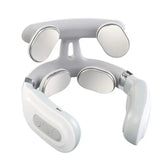What is a Skin Cycling Routine?
Alternating skincare ingredients within the various products we use is not a new concept. But over the last year, attention has been showered upon a TikTok video by board-certified dermatologist Dr. Whitney Bowe, where she demonstrates the benefits of a method she labeled “skin cycling.”
Skin cycling, a skincare method that disperses the use of active ingredients along a four-night routine, is reported to improve skin texture, clear skin, and enhance your skin’s hydration.
But what products does the skin cycling method include? In this guide, our Skin Health Experts are poring over the nitty gritty details and applying a few skincare tips and tricks, too.
Skin Cycling: A Trend With Staying Power
With a seemingly unending flood of new ingredients entering the market, it’s no wonder that people can become overwhelmed and use more skincare products than needed. However, applying a surplus of products on your face or stripping it of its natural oils can cause skin irritation, such as dry skin patches, blemishes, or flaking.
Fortunately, that’s precisely what skin cycling aims to solve. Why is this? It’s due to the skin barrier, which is the outer layer of your skin, that shields you from infections and allergens. That said, skin cycling may help refresh, rejuvenate, and hydrate your skin to restore your skin barrier—and keep it intact for future nightime routines.
So, what is skin cycling? Skin cycling simplifies your nighttime routine by simplifying your skincare ingredients.
In other words, over the course of four nights, you’ll prioritize one (yes, just one) skincare staple. This process allows your skin to repair itself and hydrate in between treatments.
Most of us already do some sort of skin cycling without realizing it, which comes down to two main elements:
- Rotating the application of skincare ingredients in a way that has a better impact on overall skin health
- Factoring in a recovery period in which your skin can rest and repair the skin barrier
When it comes to skin cycling, consistency is encouraged. But, inflammation or irritation indicates that your skin may not be happy with your current routine. As such, put your skin first and adjust your skincare as needed to account for hormonal fluctuations and support healthy, beautiful skin.
How to Optimize Your Skincare Routine
The best skincare routine is the one that is tailored to your skin’s maturity, type, tone, and condition—and using products that are formulated for your complexion type can have a positive effect on your skin’s health. For example, while dry skin certainly benefits from moisturization, people with more oily skin may want to use a lighter moisturizer or serum during the routine’s recovery days.







